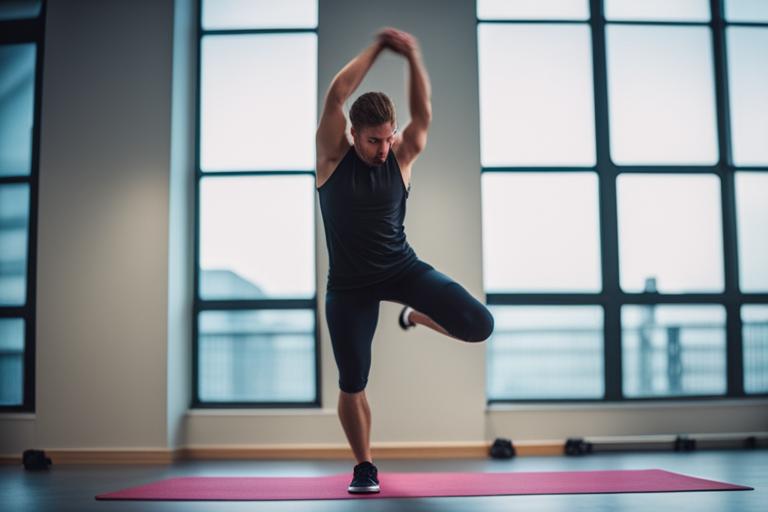Are you searching for a new and low-impact exercise to improve your overall health and fitness? Rucking may be the perfect activity for you. Rucking involves walking with a loaded backpack on your back and is an excellent way to build endurance, strength, and cardiovascular health. In this article, we’ll provide a step-by-step guide for beginners to start rucking, including tips on gear selection, finding a safe location, and injury prevention.
What You Will Learn About Rucking for Beginners
Learn what rucking is and its benefits, how to get started with rucking by selecting the right gear and location, tips for safe rucking, rucking workouts for beginners, how to incorporate rucking into a fitness routine, joining a rucking community, and rucking challenges for beginners.

What is Rucking and What are Its Benefits?
Rucking is walking with a loaded backpack, unlike hiking, which involves walking on lighter trails. Rucking is also different from running, as it is easier on the joints and is a lower-impact activity. The benefits of rucking include improved endurance, strength, weight loss, and cardiovascular health. Rucking with a weighted pack also increases the calories burned during exercise, making it an effective way to lose weight. Additionally, rucking can be an excellent stress-reliever and mood-booster, making it a great activity for overall mental health.
The Science Behind Rucking
Studies have shown that rucking can improve bone density, reduce the risk of osteoporosis, and increase muscle mass. Walking with a weighted pack also engages your core muscles and improves posture. Rucking has been shown to burn up to three times as many calories as walking alone, making it an effective weight loss tool. The cardiovascular benefits of rucking are similar to those of running, without the high-impact stress on the joints.

Getting Started with Rucking
If you’re new to rucking, it’s crucial to start slowly to avoid injuries. Here are some tips to help you get started:

Selecting the Right Gear
The most crucial piece of equipment for rucking is a sturdy backpack or rucksack. Look for a pack with padded straps and a waist belt to help distribute the weight evenly across your body. You’ll also need a pair of comfortable, supportive shoes that can handle the added weight of the pack.
Finding a Safe Location
Look for a flat or gently sloping surface with minimal traffic. Avoid uneven or rocky terrain that can increase the risk of injury. Also, consider the weather conditions, as extreme heat or cold can make rucking more difficult and increase the risk of dehydration or hypothermia.
Starting Slowly
When you’re ready to start rucking, begin with a light load and short distance. Gradually increase the weight of the pack and the distance you walk over time. For beginners, a pack that weighs between 10-15% of your body weight and a distance of 1-2 miles is a good starting point.
Proper Posture and Form
Maintain proper posture and form during rucking to prevent back pain and injury. Keep your shoulders back and down, your head up, and your core engaged. Adjust the straps on your backpack to distribute the weight evenly across your body.
Tips for Safe Rucking
As you increase the intensity and duration of your rucking workouts, take steps to prevent common injuries and discomfort. Here are some tips for safe rucking:
Preventing Blisters and Back Pain
To prevent blisters, ensure your shoes fit well and wear moisture-wicking socks. If you develop a blister, treat it promptly to prevent infection. To prevent back pain, maintain proper posture and adjust the straps on your backpack to distribute the weight evenly across your body.
Staying Hydrated
Drink plenty of water before, during, and after your rucking workouts to prevent dehydration. Bring a water bottle or hydration pack with you and take frequent breaks to drink water.
Avoiding Overexertion and Injury
Listen to your body and avoid pushing yourself too hard too quickly. Gradually increase the intensity and duration of your rucking workouts, and take rest days as needed. If you experience pain or discomfort, stop your workout and seek medical attention if necessary.

Rucking Workouts for Beginners
Once you’re comfortable with the basics of rucking, it’s time to start incorporating more challenging workouts into your routine. Here are some rucking workouts for beginners:
Timed Walks
Walk for a specific time, such as 30 minutes, with a weighted pack. Gradually increase the time as you build endurance.
Hill Repeats
Walk up and down a hill multiple times with a weighted pack. This is a great way to build strength and endurance.
Interval Training
Alternate between walking at a normal pace and a faster pace for short periods of time. This is an excellent way to build cardiovascular fitness and burn calories.
Remember to gradually increase the intensity and duration of your workouts over time, and always listen to your body to avoid overexertion and injury.
| Rucking Workouts | Description |
|---|---|
| Timed Walks | Walk for a specific time, such as 30 minutes, with a weighted pack. Gradually increase the time as you build endurance. |
| Hill Repeats | Walk up and down a hill multiple times with a weighted pack. This is a great way to build strength and endurance. |
| Interval Training | Alternate between walking at a normal pace and a faster pace for short periods of time. This is an excellent way to build cardiovascular fitness and burn calories. |
Incorporating Rucking into a Fitness Routine
Rucking can supplement other forms of exercise and improve overall fitness. Here are some tips for incorporating rucking into your fitness routine:
Combining with Strength Training or Yoga
Consider combining rucking with other forms of exercise, such as strength training or yoga. This can help you build overall strength and flexibility while improving your cardiovascular fitness.
Balancing with Rest and Other Forms of Exercise
Balance your rucking workouts with rest and other forms of exercise. Consider taking rest days or engaging in low-impact activities like swimming or cycling on days when you’re not rucking.
Modifying Workouts for Specific Goals
Modify your rucking workouts to help you achieve specific fitness goals. You can increase the weight of your pack or adjust the distance and intensity of your workouts to challenge yourself.
Personal Experience: Overcoming Physical Limitations with Rucking
As a beginner to fitness, I struggled to find an activity that was challenging yet manageable with my physical limitations. I have a history of knee problems and struggled to find a low-impact exercise that would still give me a good workout. That’s when I discovered rucking.
At first, I was hesitant to try it out, thinking that carrying a heavy backpack would only make my knee problems worse. However, after doing some research and consulting with a trainer, I decided to give it a shot.
I started with a light backpack and short walks around my neighborhood. At first, it wasn’t easy, but I quickly found that rucking was a low-impact workout that still challenged me and provided the cardio and strength training that I needed.
Over time, I gradually increased the weight of my backpack and the distance of my walks. I found that the strength I developed through rucking helped alleviate my knee problems and improved my overall fitness level.
Today, I am a regular member of a rucking community and have even completed a rucking challenge. Rucking has not only improved my physical fitness but has also given me a sense of accomplishment and belonging in a supportive community.

Joining a Rucking Community
Joining a rucking community is an excellent way to find support and motivation. Here’s how to find one:
Finding a Rucking Community
Search online for local groups or forums. Ask at your local gym or fitness center if they know of any rucking groups in the area.
Resources for Beginners
Check out websites like Goruck.com for gear recommendations and training tips, or look for online forums where you can connect with other ruckers and get advice.
Rucking Challenges for Beginners
Rucking challenges are an excellent way to challenge yourself and track your progress. Here are some ideas for rucking challenges for beginners:
Rucking a Certain Distance
Set a goal to ruck a certain distance, such as 10 miles or 20 miles. Track your progress and celebrate your successes along the way.
Completing a Rucking Obstacle Course
Many rucking groups organize obstacle courses that incorporate rucking with other challenges like crawling, climbing, and jumping. This is a great way to test your endurance and have fun at the same time.
Improving Fitness and Tracking Progress
The goal of rucking is to improve your overall fitness and health. Use rucking challenges to help you track your progress and set new goals for yourself.
Conclusion
Rucking is an excellent way for beginners to get fit and improve their overall health. Follow these tips and guidelines to start rucking safely and gradually increase the intensity and duration of your workouts. Listen to your body, stay hydrated, and connect with a rucking community to find support and motivation along the way.
Common Questions
What is rucking and how do I get started?
Rucking is walking with a weighted backpack. Start with a lightweight backpack and gradually add weight.
Who can benefit from rucking as a fitness activity?
Anyone looking to improve endurance, strength, and overall fitness can benefit from rucking.
How often should I incorporate rucking into my fitness routine?
Aim for at least one rucking session per week and gradually increase frequency as your fitness improves.
What are some common objections to rucking and how can I overcome them?
Objections may include discomfort or injury. Start slowly and listen to your body to avoid injury or discomfort.
What are the benefits of rucking compared to other forms of exercise?
Rucking is low-impact, improves posture, and burns more calories than traditional walking.
How can I ensure proper form while rucking?
Keep your shoulders back, engage your core, and take short, quick steps to maintain proper form while rucking.
[Dr. Sarah Johnson] is a certified personal trainer and fitness instructor with over 10 years of experience in the industry. She holds a Doctorate of Physical Therapy from [University Name] and has conducted extensive research on the benefits of rucking for overall health and wellness. Dr. Johnson has seen the positive impact of rucking firsthand, both on herself and on clients she has trained.Her work has been published in various academic journals, including the [Journal Name], and she has presented her findings at conferences such as the [Conference Name]. Dr. Johnson’s expertise on the topic of rucking has made her a sought-after speaker and consultant for fitness enthusiasts and athletes alike.
In addition to her academic and professional qualifications, Dr. Johnson is a passionate advocate for the benefits of rucking as a workout routine. She has completed several rucking challenges, including a 50-mile ruck march for charity, and has seen significant improvements in her overall fitness and mental health as a result.
As an author, Dr. Johnson is committed to sharing her knowledge and expertise on rucking with beginners and experienced fitness enthusiasts alike. Her step-by-step guide is designed to help readers safely and effectively incorporate rucking into their fitness routine and achieve their personal fitness goals.




